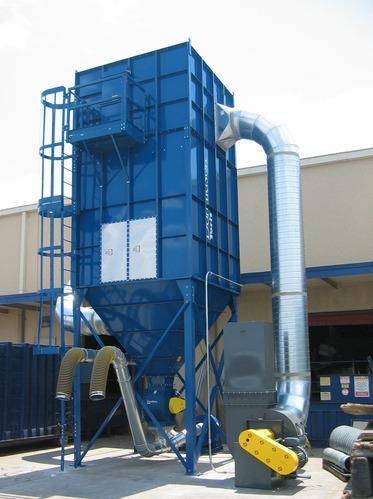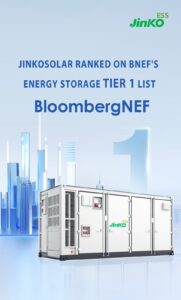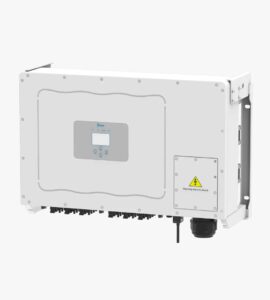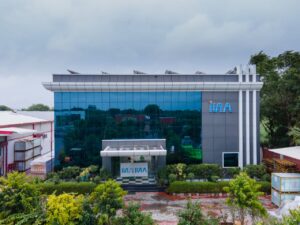ir pollution control equipment is a vital component of industrial processes that cannot be neglected. Name any industry, and you will realize the extent of harmful stuff it sends into the environment through its processes. Petroleum, energy production, coal and metal mining, chemical, and waste management industries are a few of the big-league players that have played a considerable role in polluting the environment.

Regenerative Thermal Oxidizer
Every industrial procedure – including sourcing of raw materials, manufacturing of the final product, maintenance of the site and machinery, and transporting of the product to different locations – results in some kind of pollution. The burning of fossil fuel releases volatile hydrocarbons, burning wood and coal as fuel produces carbon dioxide and sulfur dioxide, and automobiles are also a key source of harmful carbon. Each industrial activity generates emissions that directly pollute the air, soil, or water.
The goals of industrial air pollution control equipment are to:
1) decrease the release of harmful gases and control the spread of air and water pollution
2) conserve whatsoever natural resources are available for our future generations
3) decrease health threats posed by breathed in and otherwise consumed pollution
In addition, non-industrial air pollution control equipment is used in households and vehicles. In the home, filtration technology is used to remove household contaminants like pet dander, allergens, mold spores and dust stirred up from air conditioners. In vehicles, precision filtration systems reduce emissions coming out engines, exhaust pipes and air conditioning systems.
History
The initiation of air pollution can be sourced back to the beginning of the Industrial Revolution. Industries contributed in the progression of the world economy, as well as pollution. Burning fuel released from industrial process equipment, and the production and maintenance of industrial procedures all contributed to pollution. In addition, with rising industrialization came the overexploitation of natural resources such as wood, coal, water, land, etc.
People began to see the consequences of unchecked industrialization by the mid-1900s. In 1948, for example, after it reached toxic levels, air pollution in Donora, Pennsylvania killed 20 people and sickened 7,000 more. In 1952, London experienced what they called The Great Smog. This dense, impenetrable fog was a result of sulphur particles mixing with burning coal fumes in the air. During the five-day smog, some 12,000-people died, along with animals. In 1984, in Bhopal, India, an air pollution disaster caused by the Union Carbide factory killed nearly 4,000 factory workers and sickened or injured 150,000 and 600,000 people in the surrounding areas.
To combat these horrifying disasters, governments around the world put into place a variety of clean air laws. In the UK, the government passed the first Clean Air Act in 1956. This restricted coal burning in urban areas. The United States followed suit with its own Clean Air Act in 1970.
Upon the enactment of such laws, people began to make use of a few different pieces of air cleaner equipment that had been invented much earlier. One was the electrostatic precipitator, invented in 1824 by German mathematician Dr. M Hohlfeld. Around 80 years later, in 1907, Prof. Frederick Gardner Cottrell patented the first electrostatic precipitator that could be mass produced. At that time, the precipitator was used to capture, treat and eliminate sulphuric acids from emissions.
The Clean Air Act in 1990 made it mandatory to monitor some specific pollutants, periodically, at various stationary sources. To comply with monitoring requirements and the regulatory limits, monitoring equipment is as important as pollution control equipment. Monitoring equipment is helpful in keeping data concerning particulate matter and gaseous pollutants, which is important for getting permits for new and existing facilities and for audit purpose. Moreover, emissions monitoring is essential to monitor health and safety within the plant and to assess the efficiency of the pollution control device.
Thanks to the dedication of many, in the last several years, VOC and HAP emissions have gone down significantly. However, carbon emissions are now entering the foreground of concern, due to the emergence of global climate change. Therefore, lawmakers and environmentalists are now working together to create legislation that will help lower carbon emissions as much as possible. Given these new and up-and-coming regulations, manufacturers may need to be prepared to find alternatives to incinerators and oxidizers. These alternatives may include elements of filtering systems like electrostatic precipitators, mist collectors, wet scrubbers and dry scrubbers.
How It Works
Air pollution control equipment may work in one of three different ways:
1. Chemical modification
This method involves converting a dangerous chemical into an inert chemical. This is usually done using something like a flue gas desulphurization electrostatic precipitator.
In addition, to help clean up nitrogen oxide, certain controls include selective catalytic reduction processes. These regulate nitrogen oxides emissions from non-moving sources and from selective non-catalytic reduction, a process that changes oxides of nitrogen (NOx) into molecular nitrogen (N2). If VOCs have recovery value, technicians may employ carbon adsorption, scrubbing and condensation to recuperate materials. If not, technicians may employ thermal oxidation, catalytic oxidation or biofiltration.
2. Contaminant Destruction
This form of air purification is the most difficult, as it involves reach high enough boiling points to burn away chemicals with very high boiling points.
3. Hazard Removal
Removing the hazard from the air is the most common and the easiest form of air purification. This can be done in a number of ways, but mostly it is done using air filter systems.
Safety and Compliance Standards
Air pollution control equipment helps its users adhere to a variety of safety and compliance standards, like those put out by the EPA.
Environmental Protection Agency (EPA) regulations, such as the Clean Air Act and the National Ambient Air Quality Standards (NAAQS), limit the type and quantity of VOCs and HAPs industrial manufacturing facilities may emit during processing. It’s important to respect these regulations not only from a business standpoint, but from the perspective of community health and ethics.
We are here to help you to choosing the right air filter manufacturer. Write us on help@industrialoutlook.in






